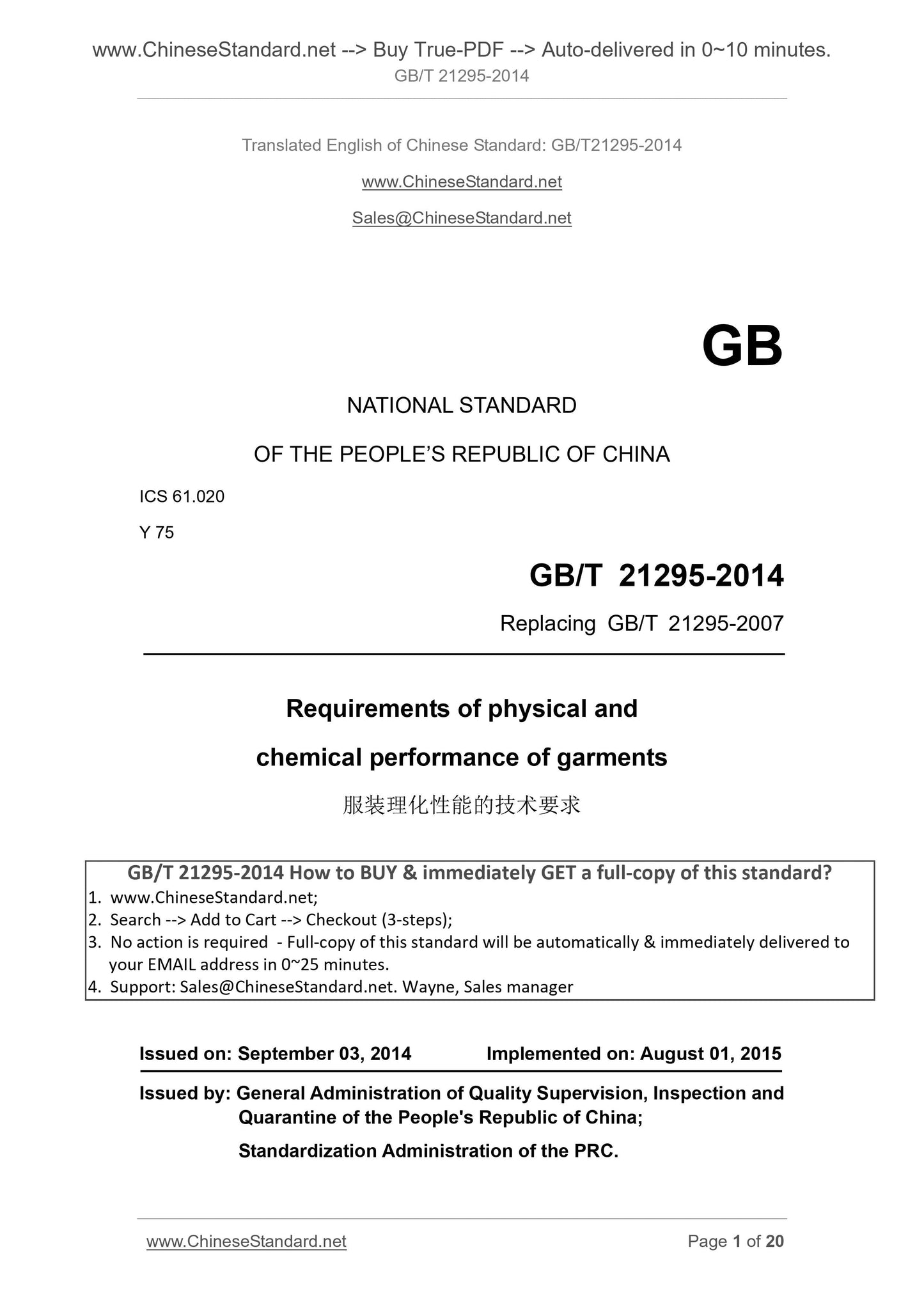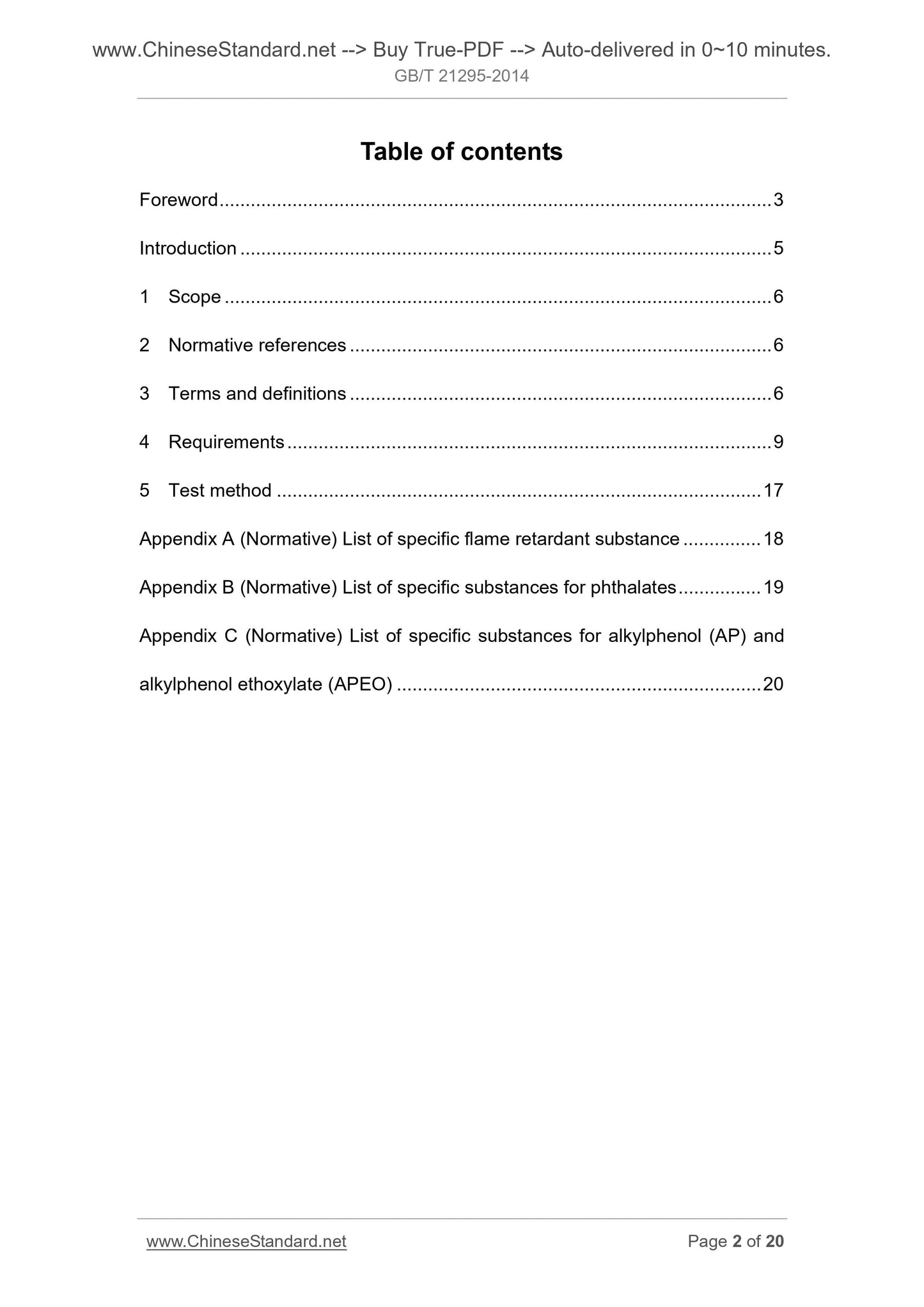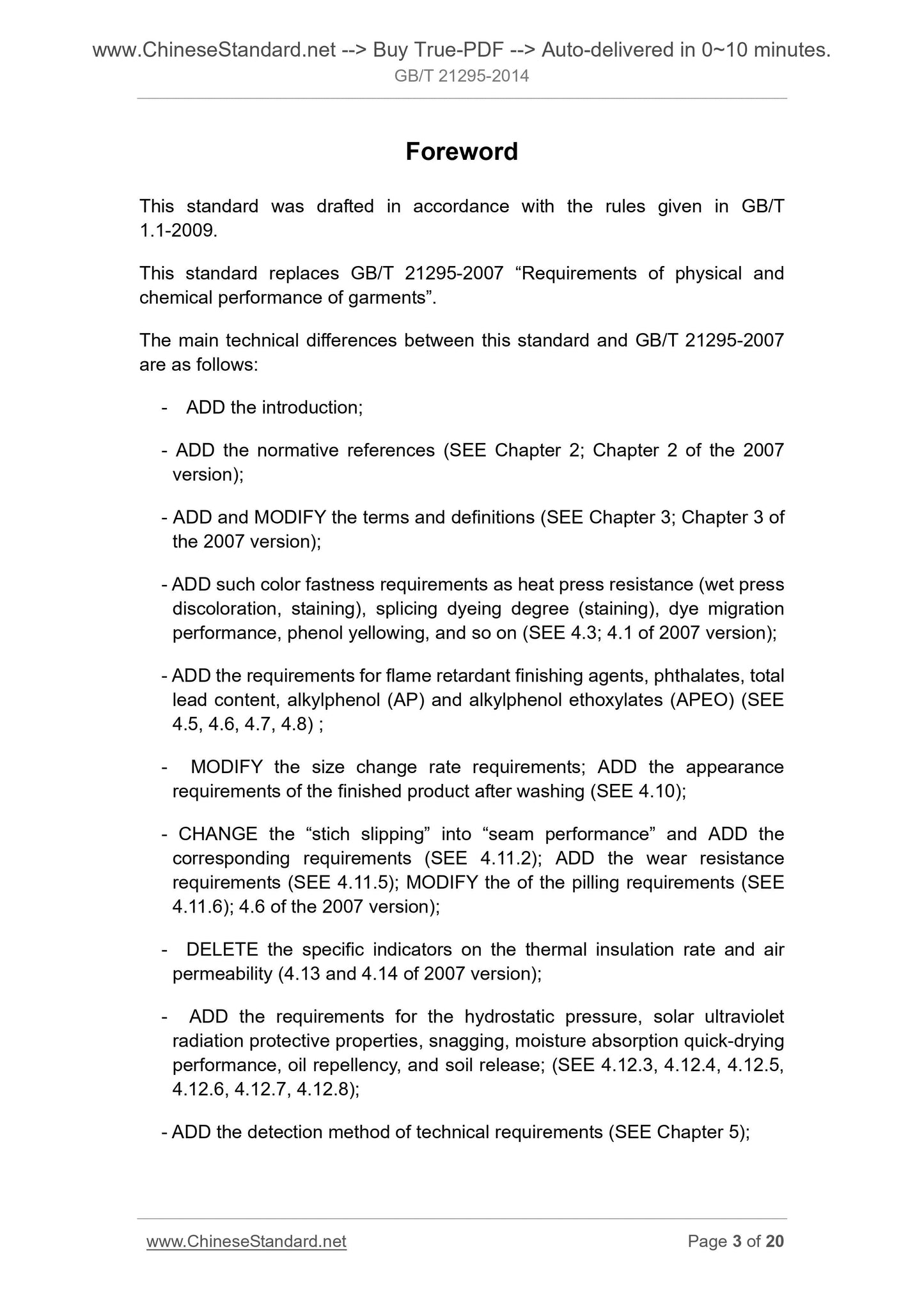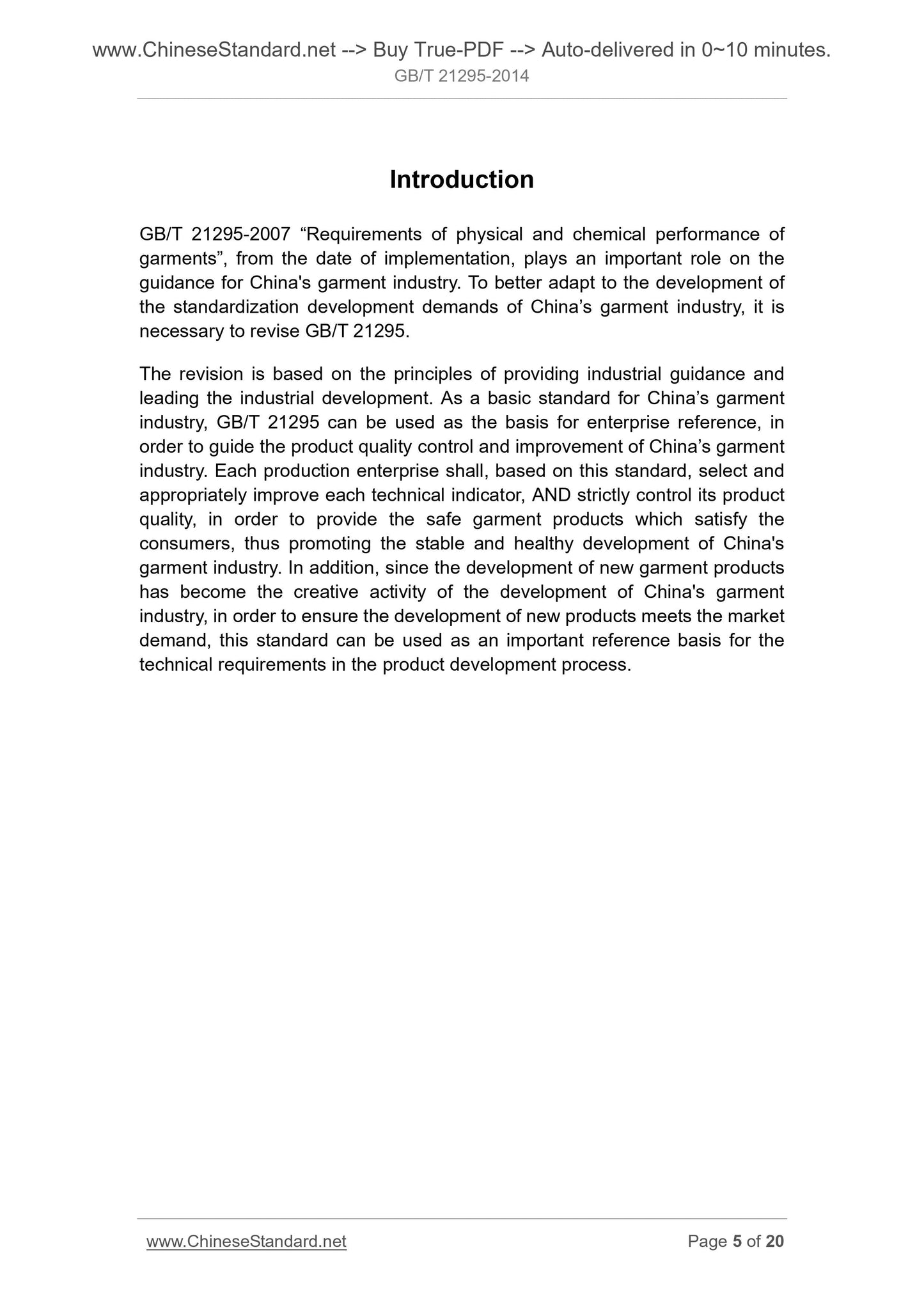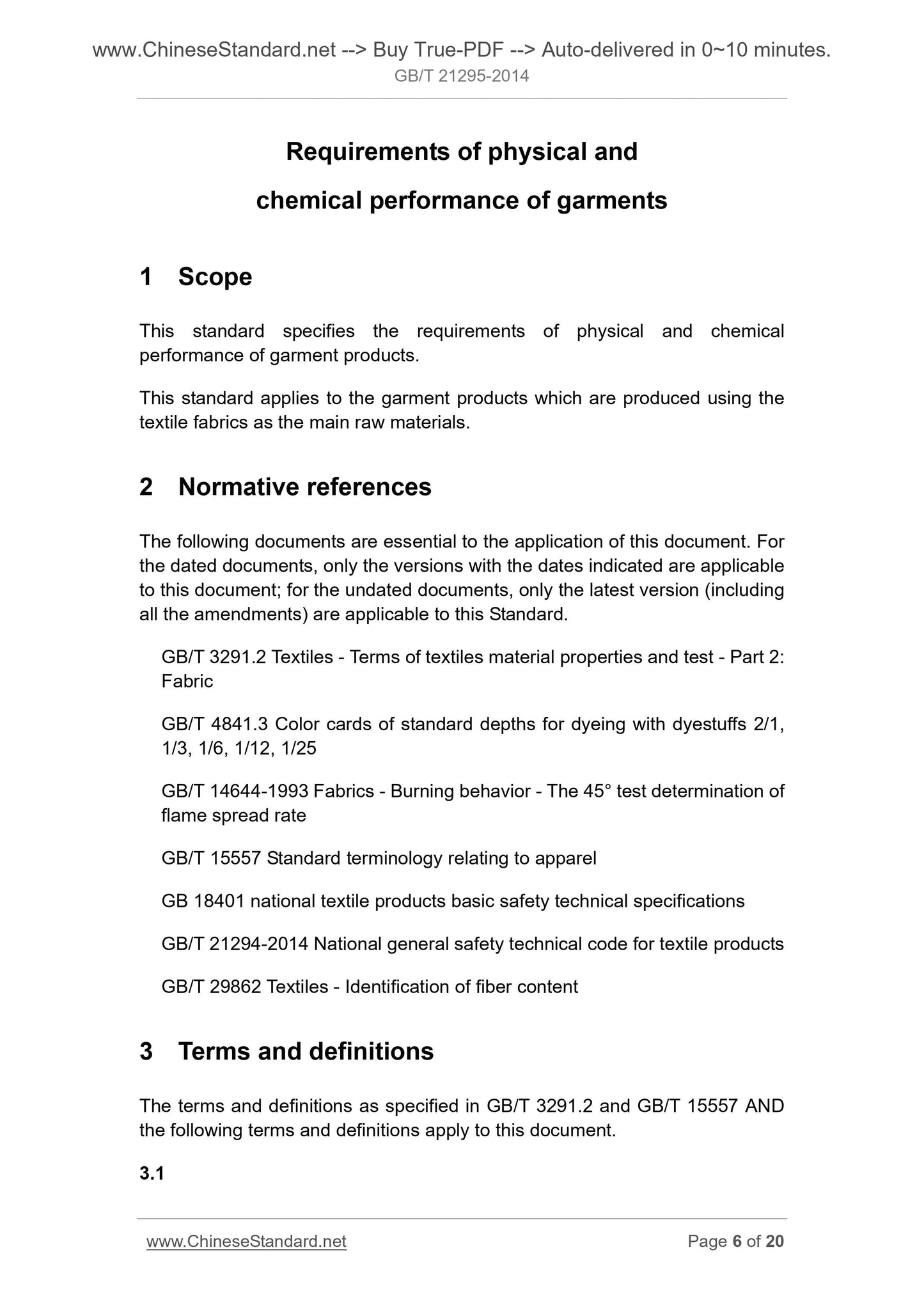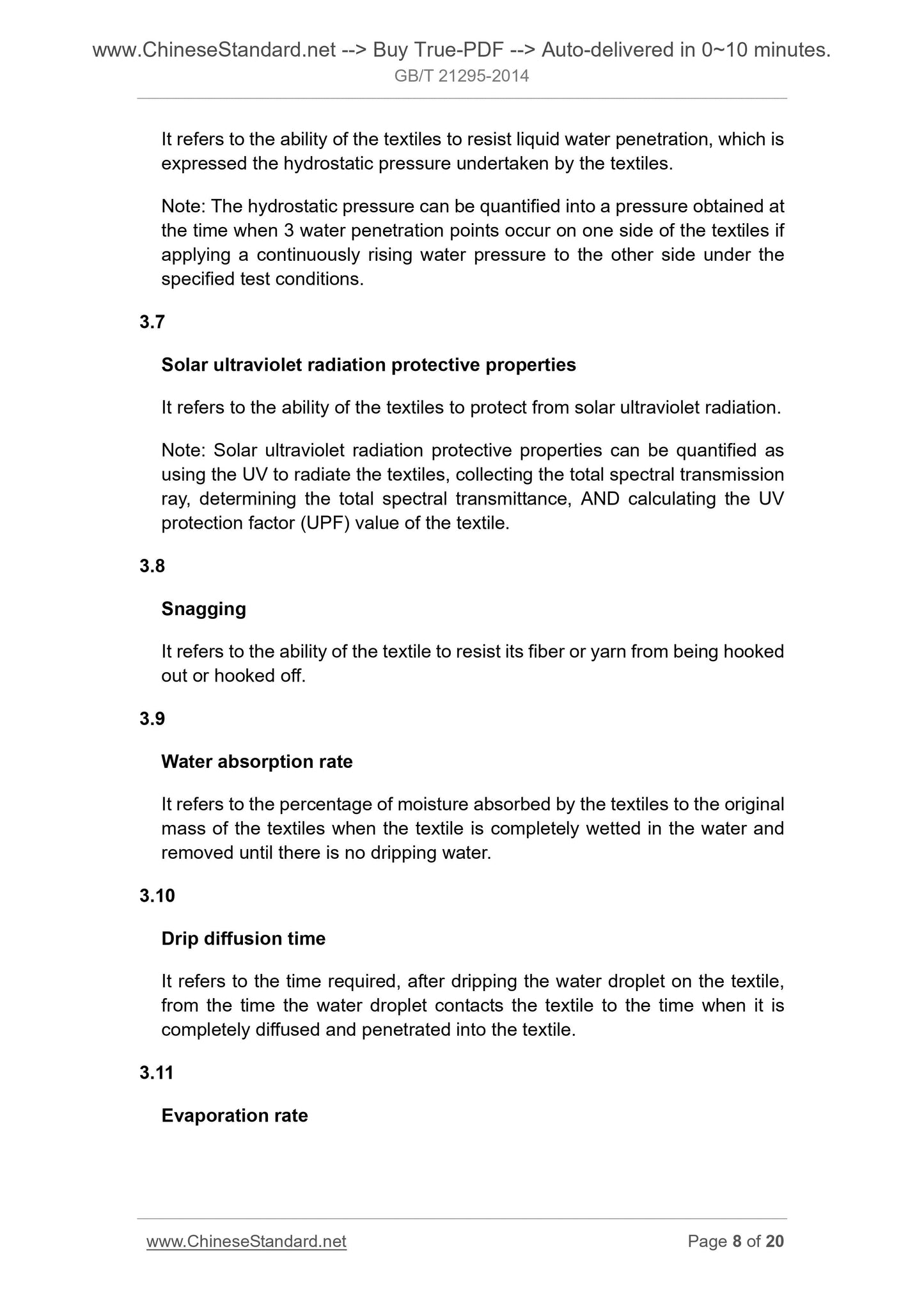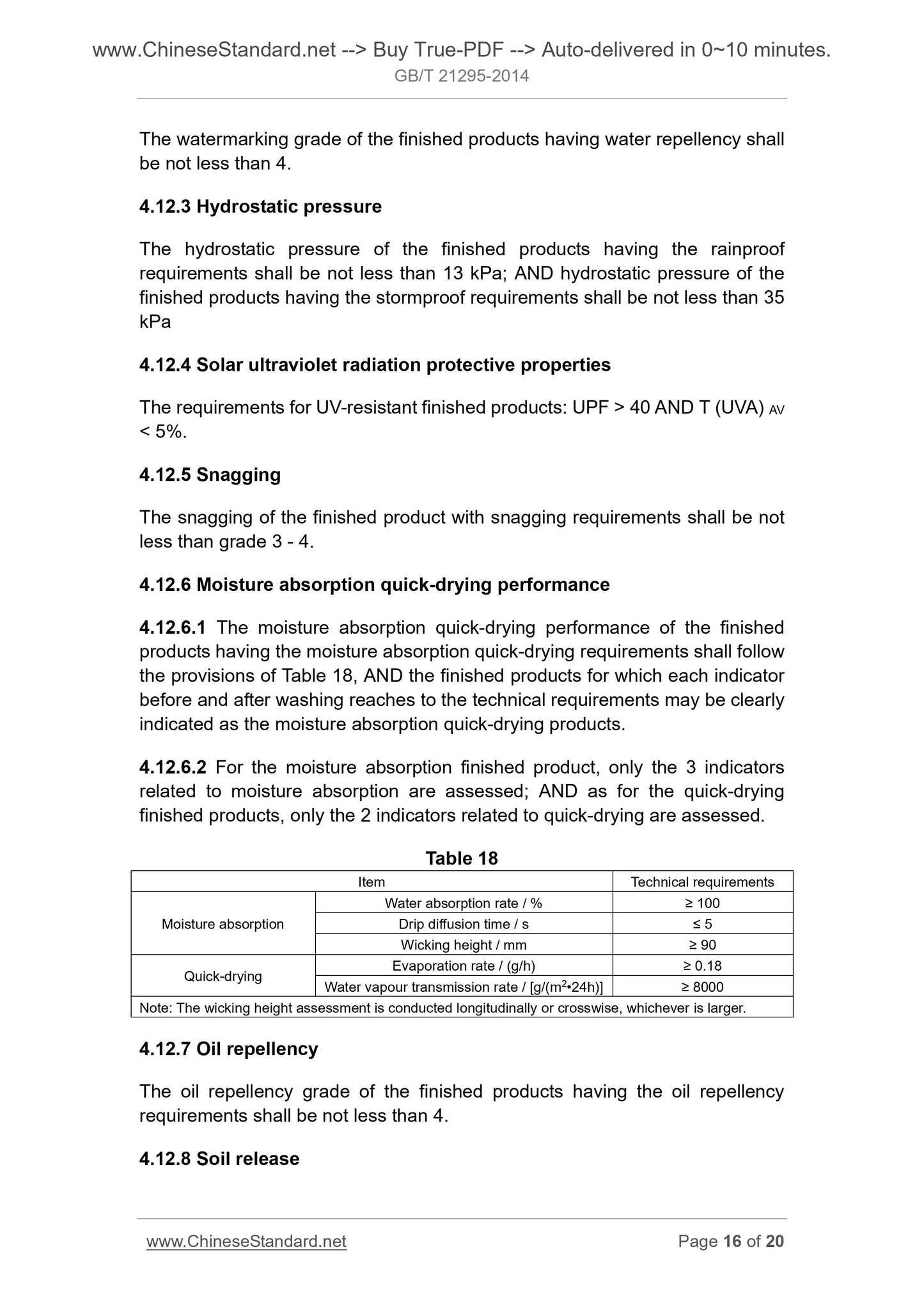1
/
of
7
PayPal, credit cards. Download editable-PDF and invoice in 1 second!
GB/T 21295-2014 English PDF (GB/T21295-2014)
GB/T 21295-2014 English PDF (GB/T21295-2014)
Regular price
$85.00
Regular price
Sale price
$85.00
Unit price
/
per
Shipping calculated at checkout.
Couldn't load pickup availability
GB/T 21295-2014: Requirements of physical and chemical performance of garments
Delivery: 9 seconds. Download (and Email) true-PDF + Invoice.Get Quotation: Click GB/T 21295-2014 (Self-service in 1-minute)
Newer / historical versions: GB/T 21295-2014
Preview True-PDF
Scope
This standard specifies the requirements of physical and chemicalperformance of garment products.
This standard applies to the garment products which are produced using the
textile fabrics as the main raw materials.
Basic Data
| Standard ID | GB/T 21295-2014 (GB/T21295-2014) |
| Description (Translated English) | Requirements of physical and chemical performance of garments |
| Sector / Industry | National Standard (Recommended) |
| Classification of Chinese Standard | Y75 |
| Classification of International Standard | 61.020 |
| Word Count Estimation | 17,137 |
| Date of Issue | 9/3/2014 |
| Date of Implementation | 8/1/2015 |
| Older Standard (superseded by this standard) | GB/T 21295-2007 |
| Quoted Standard | GB/T 3291.2; GB/T 4841.3; GB/T 14644-1993; GB/T 15557; GB 18491; GB/T 21291-2014; GB/T 29862 |
| Regulation (derived from) | People's Republic of China Announcement of Newly Approved National Standards No. 21 of 2014 |
| Issuing agency(ies) | General Administration of Quality Supervision, Inspection and Quarantine of the People's Republic of China, Standardization Administration of the People's Republic of China |
| Summary | This Standard specifies physical and chemical properties of clothing products technical requirements. This Standard is applicable to textile woven fabric as the main raw material production of clothing products. |
Share
